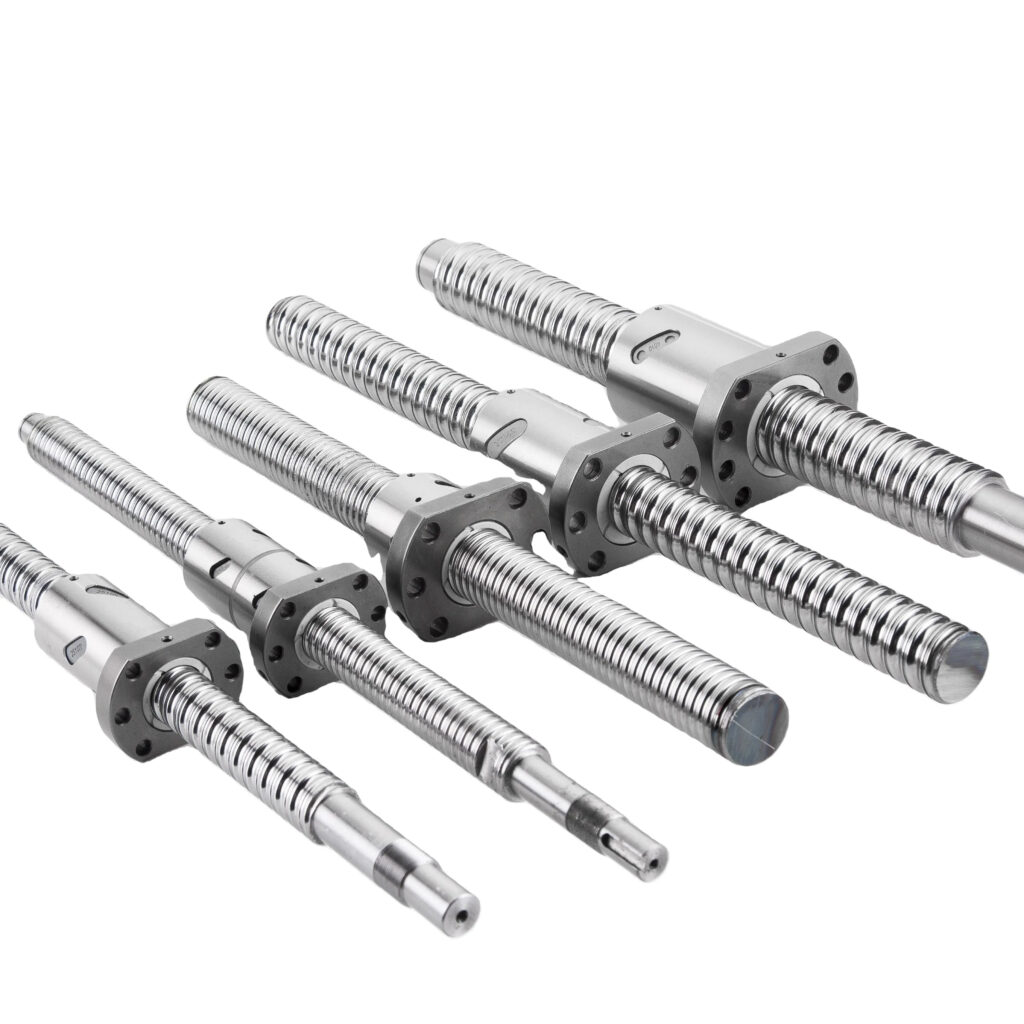A ball screw is so named because it incorporates ball bearings as part of its mechanism. The use of ball bearings distinguishes it from a standard lead screw. Here’s a brief overview of how a ball screw works and why it’s called a “ball screw”:
- Helical Grooves: Like lead screws, ball screws consist of a helically threaded screw and a matching nut with corresponding threads. The helical grooves on the screw allow for linear motion when the screw is rotated.
- Ball Bearings: What sets a ball screw apart is the presence of small ball bearings within the nut. These ball bearings circulate between the grooves of the screw and the threads of the nut. As the screw rotates, the ball bearings roll between the grooves, creating a rolling motion instead of the sliding motion typical in lead screws.
- Efficiency and Reduced Friction: The use of ball bearings serves to reduce friction significantly. Rolling friction is generally lower than sliding friction, resulting in higher efficiency and less wear over time. This design contributes to improved precision and smoother linear motion.
- Advantages of Ball Bearings: The ball bearings in a ball screw act as rolling elements that reduce friction and allow for more efficient power transmission. This design also minimizes backlash (clearance between the screw and nut), contributing to increased precision and repeatability.
The name “ball screw” reflects the crucial role played by these ball bearings in the mechanism. This design enhances the performance of the screw by providing smoother, more efficient motion, making ball screws particularly well-suited for applications that require high precision and reliability.

